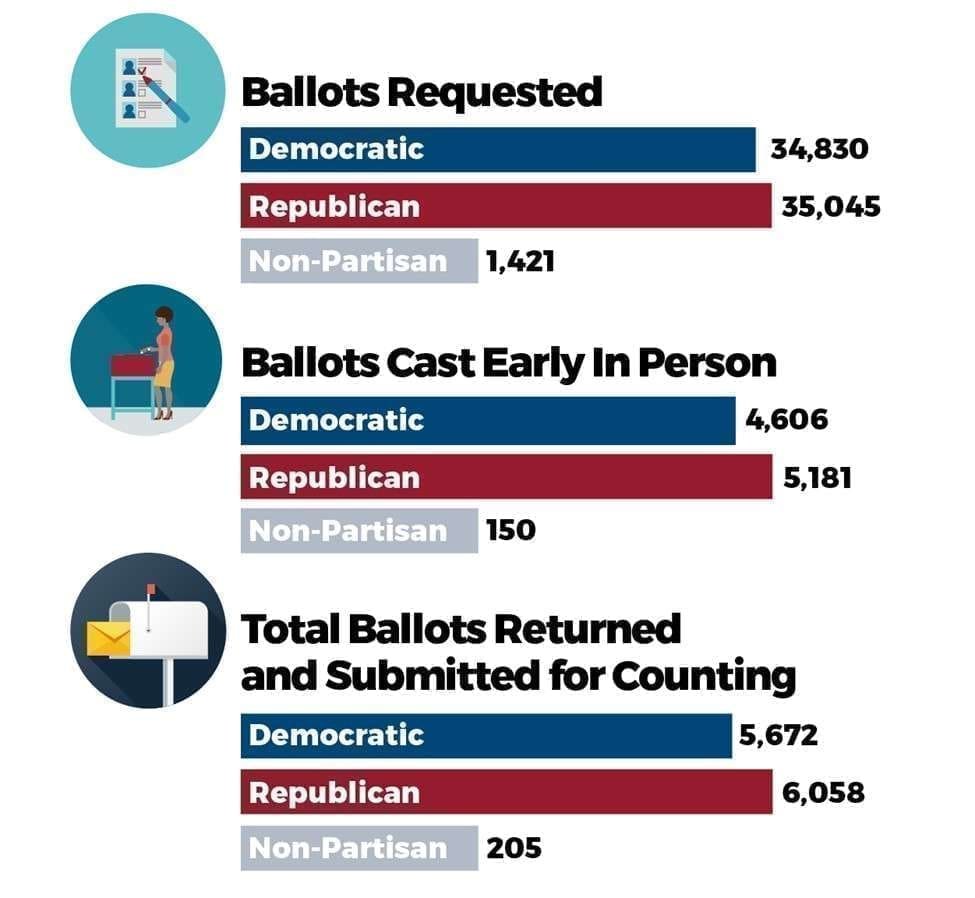
COLUMBUS – With exactly three weeks to go before Ohio’s May 3rd Primary Election, Ohio Secretary of State Frank LaRose has announced that 71,296 absentee ballots have been requested by-mail or in-person and that 11,935 votes have been cast statewide.
Data was collected by the Ohio Secretary of State’s Office via an informal survey of Ohio’s 88 county boards of elections.
“Reports from the first week of early voting show exactly what we expected – our bipartisan election officials were ready and the election is running smoothly,” said LaRose.
“With three weeks to go until election day, voters are making their voice heard in a number of important races that will shape the future of our nation, our state, and even the community where they raise their family.”
This election season, Ohio voters will enjoy nearly 200 hours of early voting in the May 3rd primary. Ohio is one of 18 states that allows voting on a Saturday and one of just six states that allows early voting on a Sunday. Ohio’s early voting period is 21% longer than the national average.
Voters may also choose to vote by mail. Learn how to request your absentee ballot at VoteOhio.gov.
Of the 42 states that run a traditional absentee voting system, a comprehensive review by the Brookings Institute determined no state does it better than Ohio. SOURCE: www.brookings.edu/research/voting-by-mail-in-a-pandemic-a-state-by-state-scorecard/.
Absentee voting in Ohio is time-tested and has strong security checks in place.
Ohioans have utilized absentee voting for two decades, and that has allowed Ohio to put in place both the laws and processes necessary to make absentee voting secure against fraud.
• Voter identification and signature are checked TWICE during the process
• Voter list maintenance allows for accurate voter rolls
• Ballot harvesting is against the law in Ohio
• Voters are able to track their ballot on VoteOhio.gov/Track.
These requirements and processes, as well as strict laws against voter fraud, have made absentee voting secure in Ohio and instances of voter fraud exceedingly rare.
Learn more about how Ohio keeps our elections secure by visiting ElectionSecurity.Ohio.gov.
Voters should consider these best practices when they choose the absentee ballot option:
• Fill in the information properly. Review the form to ensure you have filled it out properly, including writing your date of birth where required, not the day’s date, as well as signing your request form.
• Include your e-mail and/or phone number. County boards of elections will be calling or e-mailing voters who may need to remedy information on their ballot request form or absentee ballot envelope. Including your information will ensure you can be reached if your ballot request doesn’t have everything filled out properly.
• Don’t wait. To accommodate necessary processing time at the county board of elections and the time required for the United States Postal Service to deliver elections mail, voters should not procrastinate – fill out and mail your absentee ballot request as soon as possible.
• Double check your return envelope. Before you submit your ballot request form, make sure the envelope is addressed to your county board of elections.
• Track your ballot. Once their ballot request is received by their county board of elections, voters may track their ballot at VoteOhio.gov/Track. As long as your ballot is postmarked by the day before the election and received within 10 days (or 20 days for UOCAVA voters) after the election at your county board of elections, your vote will be tabulated.
Ohio voters will find the following races on their primary ballot:
• Governor
• Attorney General
• Auditor of State
• Secretary of State
• Treasurer of State
• Ohio Supreme Court
• U.S. Senate
• U.S. Representative to Congress
• Additional Judicial and municipal candidates
The offices of State Senator, State Representative, and Member of State Central Committee will not appear on the May 3rd Primary Election ballot.
